Electronic Groupsets: Revolutionizing Cycling Technology
Electronic groupsets have witnessed a remarkable surge in popularity, becoming virtually ubiquitous in the professional peloton. This cutting-edge technology, first introduced with Shimano Di2, has now trickled down to lower-tier road and mountain bike groupsets, resulting in an unprecedented array of options available on the market today.
In a remarkable turn of events, industry behemoths Shimano, SRAM, and Campagnolo have now exclusively shifted their focus on electronic alternatives for their top-tier road groupsets. This strategic move clearly indicates that there are no immediate plans to further develop their mechanical groupsets.
Among the leading manufacturers, Campagnolo primarily emphasizes road bike groupsets, while SRAM and Shimano have taken the lead in pioneering electronic drivetrains for mountain bikes.
The benefits of electronic groupsets are manifold, featuring precise shifting and, in some cases, hassle-free setup. However, it is important to note that certain riders still prefer the tactile experience and easy maintenance of mechanical groupsets. Furthermore, the cost factor cannot be ignored as electronic groupsets tend to be more expensive.
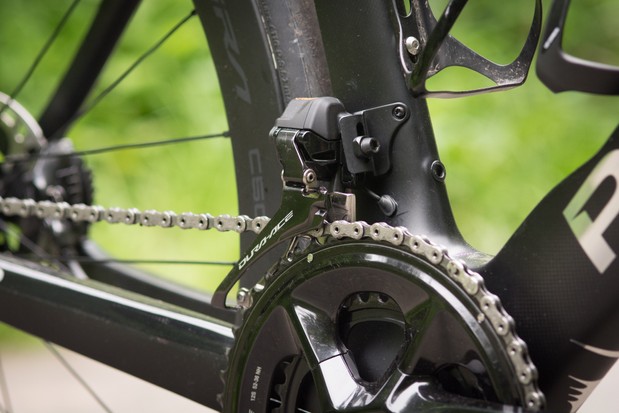
In this comprehensive guide, we will delve deeper into the essence of an electronic groupset, exploring their inner workings, and analyzing the pros and cons in comparison to their mechanical counterparts. Additionally, we will shed light on the major manufacturers, their diverse product offerings, and the intricate details that differentiate various systems.
You may utilize the following links to swiftly navigate to the desired sections:
Unlocking the Essence: What Defines an Electronic Groupset?
Electronic groupsets revolutionize the shifting of gears by employing motorized derailleurs. Unlike their mechanical counterparts, these futuristic groupsets eliminate the need for traditional gear cables, relying instead on either wires or wireless signals to establish seamless communication between the shifter and the derailleurs.
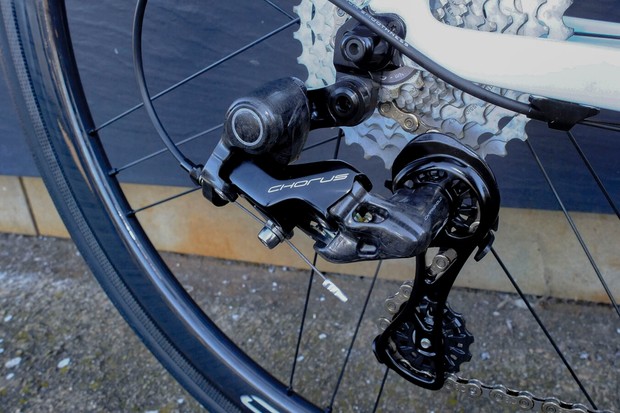
Within the electro-mechanical realm, the crucial task of moving the chain up or down the cassette, or switching between chainrings, is accomplished by powerful motors integrated within the derailleurs themselves. This ingenious approach ushers in a new era of cycling technology, captivating enthusiasts worldwide.
Mechanical groupsets vs electronic groupsets
Why would you choose an electronic groupset over its mechanical counterpart?
There are advantages and disadvantages to both technologies and the final decision will ultimately depend on personal preference and budget.
Advantages of mechanical groupsets
Some riders prefer the tactile sensation of mechanical shifting.
The chief benefits of a mechanical groupset are simplicity and affordability.
Mechanical shifting has endured the test of time and as a result, there are mechanical groupset options available for every level of cycling, ranging from beginners to elite athletes.
In terms of bike maintenance, mechanical groupsets are relatively straightforward to work on. If you happen to encounter a problem in the middle of nowhere, issues can generally be diagnosed easily and in the worst-case scenario, replacing a gear cable is relatively simple and cost-effective. Additionally, buying replacement parts is usually easier and cheaper.
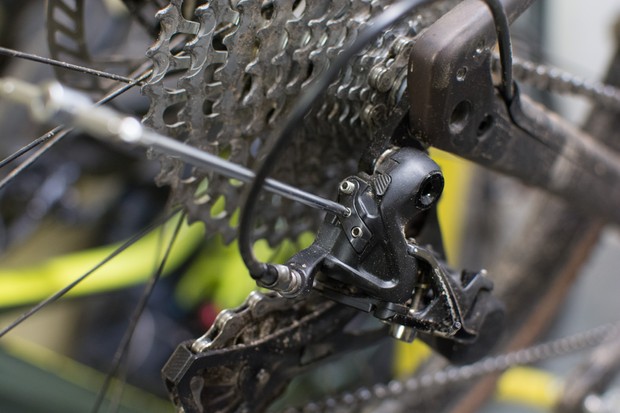
Many riders have become accustomed to and prefer the feel of mechanical shifting, as the actuation of the shifter provides a crisp and satisfying feedback.
When you initiate a shift, you can feel the derailleur moving, creating a more engaging interaction compared to a robotic, electronic whir.
Disadvantages of mechanical groupsets
Mechanical groupsets require occasional reindexing.
Regular maintenance is necessary.
- (1) Subject to normal wear and tear, mechanical groupsets often need to undergo re-indexing to properly adjust the gears. This occurs because the cables naturally try to find the shortest path between the shifter and derailleur housed within them. It is commonly known as cable stretch.
- (2) Gear cables are susceptible to wear and accumulating dirt over time, resulting in a decline in shifting quality. To maintain optimum shifting performance, it is necessary to replace the gear outer and inner cables at regular intervals.
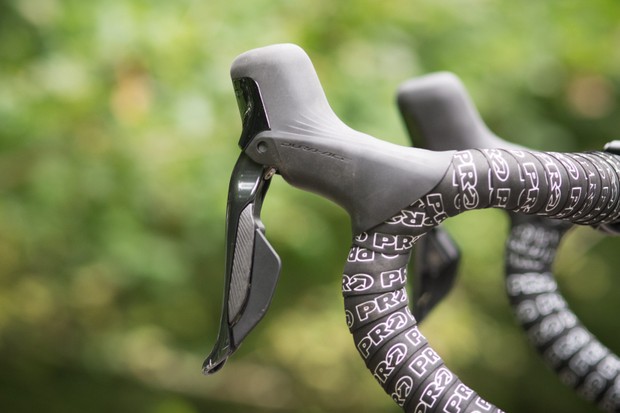
(3) Advantages of electronic groupsets
Simply by pressing a designated button, electronic groupsets enable effortless gear shifts. Matthew Loveridge / Immediate Media
- (4) No cable stretch
- (5) Reliable and consistent shifting
- (6) Convenient setup process (sometimes)
For an electronic groupset, the absence of cables eliminates the issue of stretch, ensuring that Shimano’s wires, for instance, are unaffected by road or trail conditions.
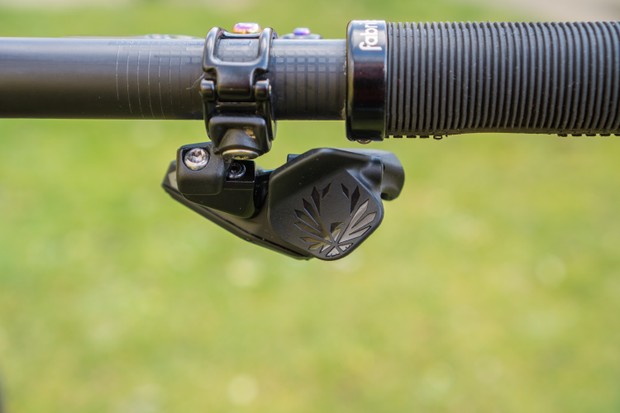
In theory, as long as there are no crashes or damage to the derailleur hanger, and the battery remains charged, the shifting quality should remain intact over time.
Electronic shifting offers remarkable consistency, making it near-impossible to encounter mis-shifts, regardless of the shifting combinations employed.
Furthermore, the effort required to shift is significantly reduced, as a simple click of the relevant lever on the shifter performs the task, without the added friction caused by manual cable movement.
With the absence of cables, SRAM’s wireless eTap AXS groupsets are effortlessly set up. Alex EvansElectronic
Given the increased likelihood of mud and debris making their way into cables off-road, electronic shifting presents a particularly appealing option.
Modern Rear Derailleurs and Clutch Mechanisms
Virtually all modern, off-road rear derailleurs utilize a clutch mechanism to prevent chain slap. When it comes to mechanical shifting, this can increase friction as you overcome the force of the clutch. However, this isn’t a problem with electronic shifting.
Shift Across Multiple Gears with Electronic Groupsets
One advantage of electronic groupsets is the ability to shift across multiple gears simultaneously, both up and down the cassette, by holding down the relevant button. This feature proves especially useful when you need to quickly change into a different gear, such as when encountering a steep ramp after a fast descent.
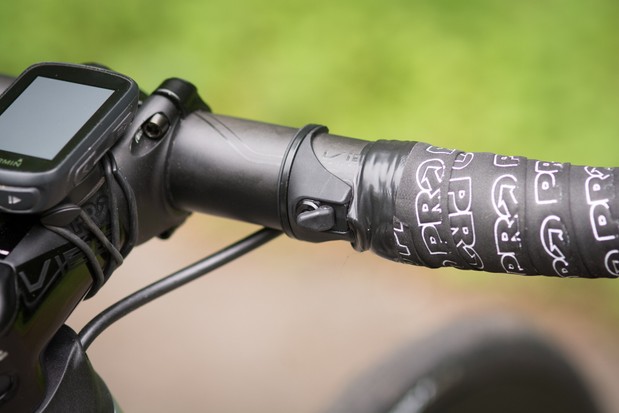
Up-Shifting and Down-Shifting with Mechanical Road Groupsets
With mechanical road groupsets, you can up-shift three gears with all major groupset brands. However, you can only down-shift up to five gears with Campagnolo’s Chorus, Record, and Super-Record groupsets, which incorporate the Ultra-Shift mechanism. On the other hand, Shimano and SRAM are limited to one down-shift at a time.
Customize Your Electronic Groupset
Electronic groupsets offer the option to customize your shifting experience. Additional points of shifting, like handlebar-mounted buttons known as ‘sprint shifters’, ‘satellite shifters’, or ‘blips’, can be added. These allow you to shift from alternative locations while sprinting or climbing, without moving your hands from your preferred position.
Connectivity and Customization Options
All major groupset manufacturers provide connectivity between their electronic groupsets and partner apps. This allows you to personalize the function of each button. For example, you can modify a lever that would normally be pre-programmed to down-shift and vice versa, depending on your preference. Mechanical systems lack this flexibility due to the specific cable pull required for the derailleur.
Easier Installation and Set-Up
Installing electronic groupsets can be easier compared to mechanical systems when building up a bike. With electronic wires being narrower in profile, they are more manageable to install through intricate integrated setups. In certain cases, like SRAM’s wireless electronic AXS groupsets and Campagnolo Super Record Wireless, there is no need for cabling whatsoever, simplifying the set-up process significantly.
Cons of electronic groupsets
Shimano has recently redesigned its Di2 shifting buttons to enhance their distinguishability. Matthew Loveridge / Immediate Media
- Reduced feedback when shifting: One downside of electronic groupsets is the potential lack of tactile feedback during gear changes. However, it’s important to note that this aspect is subjective, as some cyclists appreciate the reassuring click of a mechanical shifter.
- Diagnosis challenges: Identifying and addressing issues with electronic groupsets can be more complicated compared to their mechanical counterparts. Carrying the necessary spare parts to resolve a problem on the road or trail may not always be feasible.
- Increased cost: Electronic groupsets generally come with a higher price tag than mechanical ones. This additional expense is primarily due to the advanced technology and electronic components involved.
- Slight weight penalty: When opting for an electronic groupset, there is typically a minor increase in weight. The inclusion of motors in the derailleurs, along with the battery and junction boxes (if applicable), contribute to this minimal weight difference. Nonetheless, most riders find the benefits outweigh the added weight.
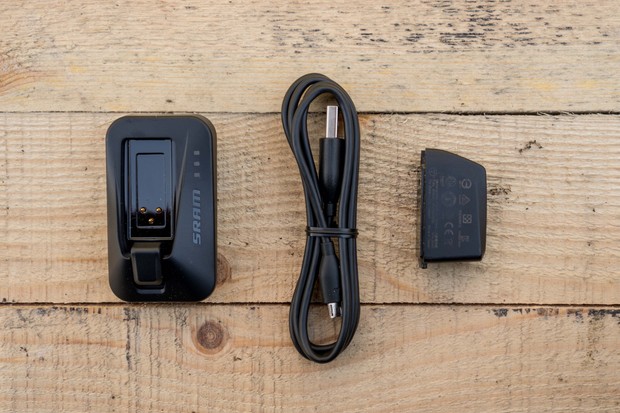
Electronic groupsets necessitate regular charging and can present challenges when diagnosing issues on the go. Alex Evans
Despite their more consistent and impressive front shifting capabilities compared to mechanical groupsets, it is important to exercise caution and avoid shifting under heavy loads, even though manufacturers may permit it.
Electronic Front Derailleurs with Aggressive Motors
Electronic front derailleurs are equipped with powerful motors that have an aggressive nature. This unique feature allows you to smoothly shift gears even while under load. For instance, if you need to make quick and efficient transitions between chainrings, these derailleurs can handle the task effortlessly. However, it’s important to note that such a mechanism places additional strain on your bike’s frame, particularly the front-derailleur hanger. To address this issue, SRAM AXS front derailleurs come with a support brace included in the package, acknowledging the significance of maintaining durability and stability.
The Costly Trade-Off of Electronic Groupsets
Undoubtedly, one of the primary drawbacks of opting for an electronic groupset is the increased cost. When comparing it to an equivalent mechanical groupset, the price difference is substantial. Electronic groupsets are generally limited to the upper end of the market, further contributing to their expensive nature. However, it’s worth noting that advancements in technology are gradually making their way down the groupset tiers. This means that more options are becoming available across different brands’ ranges, as we will explore in the following sections.
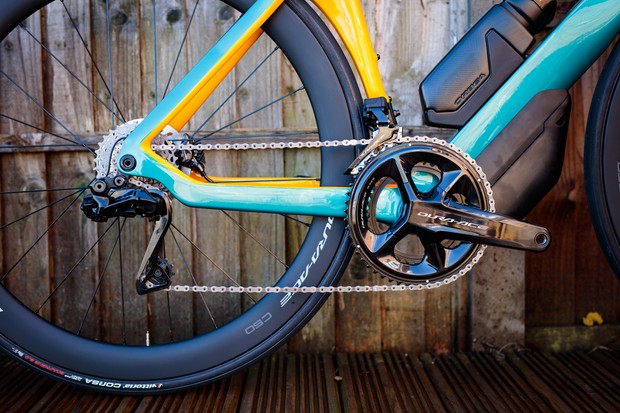
Leading Manufacturers of Electronic Groupsets
Three prominent players dominate the groupset market when it comes to electronic offerings: Shimano, SRAM, and Campagnolo. Each of these manufacturers boasts their own range of electronic groupsets.

Shimano and SRAM provide electronic groupsets for road, gravel, and mountain biking, while Campagnolo’s offerings are primarily focused on road cycling.
Shimano Di2
Shimano’s flagship road groupset, the Dura-Ace R9200, is a testament to their relentless pursuit of excellence in engineering and innovation. Simon von Bromley / Immediate MediaRoad
- Dura-Ace R9200
- Ultegra R8100
- 105 R7150
Gravel. Mountain. Urban.
Shimano was the first prominent manufacturer to successfully introduce a mass-market electronic groupset. Initially limited to their top-tier groupsets, Dura-Ace and Ultegra, the brand expanded its electronic groupset lineup in June 2022 with the inclusion of 105, their third-tier groupset. The Dura-Ace R9200, Ultegra R8100, and 105 R7100 groupsets represent the pinnacle of Shimano’s offerings and incorporate cutting-edge technologies from previous generations, now featuring 12-speed capabilities. It’s important to note that the rim-brake versions of Ultegra and Dura-Ace remain fully wired, while their semi-wireless shifting system is a standout feature.
Shimano also caters to the gravel enthusiasts with their GRX Di2, an electronic groupset designed specifically for off-road adventures. Additionally, Shimano offers Di2 versions of their 11-speed mountain bike groupsets, XTR and Deore XT. These mountain bike groupsets maintain a fully wired configuration and do not provide the option for semi-wireless operation. For more information on Shimano groupsets and their incredible performance, visit Tommy Check.
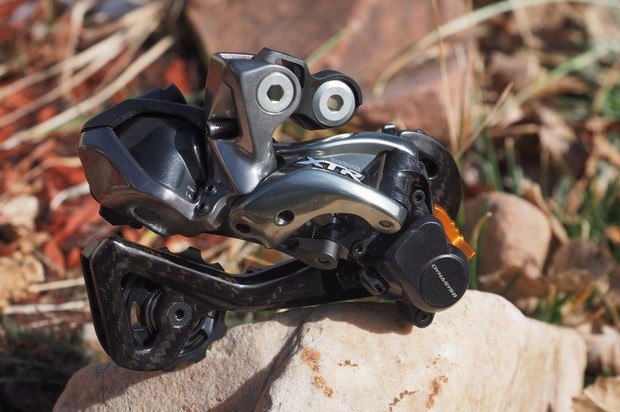
Moving on to gravel bikes, Shimano presents the GRX815, a Di2 version of its GRX gravel groupset. Similar to the brand’s mountain groupsets and previous-gen 11-speed road groupsets, this offering relies on wired technologies. It is worth noting that Shimano’s XTR M9050 is due for an update. As the Japanese brand has not released an electronic equivalent to its current XTR M9100 or XT M8100 12-speed mechanical groupsets, and considering that GRX is 11-speed, could we expect an update to Shimano’s off-road setups in the near future?
As for utility, Shimano stands out by providing the Alfine Di2 for hub-gear users, making it the only brand among the major three to do so.
SRAM eTap AXS
SRAM’s eTap AXS groupsets operate wirelessly. When it comes to road biking, they offer the following options:
– Red eTap AXS
– Force AXS
– Rival eTap AXS
Meanwhile, for gravel biking, there is the intriguing option of the Red eTap XPLR AXS
The SRAM Groupsets
- Force XPLR AXS: This groupset offers advanced technology and reliable performance.
- Rival eTap XPLR AXS: Launched in April 2021, this groupset brings electronic shifting to a more affordable price point.
- Apex XPLR AXS: Designed for gravel riding, bikepacking, and commuting, this groupset is only available in 1x.
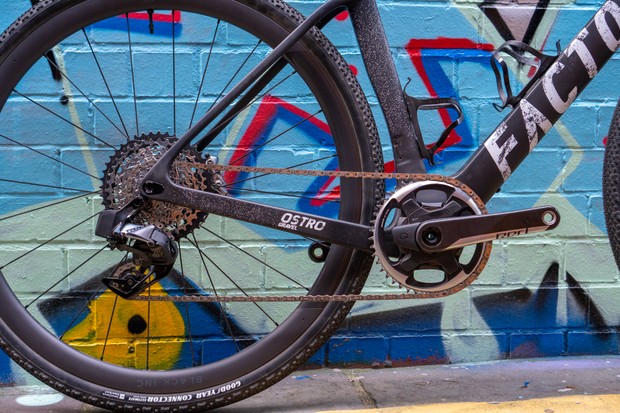
Road Groupsets
The American manufacturer, SRAM, introduced its electronic revolution by embracing wireless technology. They bypassed Shimano and Campagnolo to become a leading brand in this innovative field.
Within the eTap AXS line-up, SRAM offers four levels of road groupsets. The top-of-the-range option is Red. Known for its exceptional performance, Red leaves no expense spared.
Oscar Huckle / Our Media
Next in line is Force. Utilizing similar technologies as Red, this groupset offers a slightly heavier build to achieve a more affordable price point.
The third-tier groupset is the Rival eTap AXS. Launched in April 2021, it brings electronic shifting to a more competitive price range, directly competing with Shimano 105 Di2.
SRAM also upgraded its entry-level road groupset, Apex, with the AXS treatment. Aimed at gravel riding, bikepacking, and commuting, this groupset is exclusively available in 1x configuration.
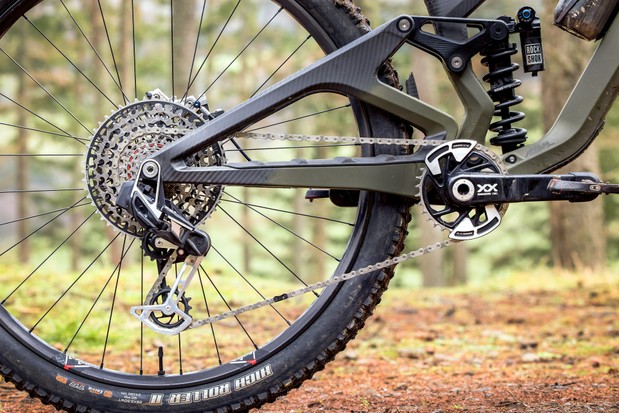
Mountain Bike Groupsets
SRAM has extended its eTap AXS system to its mountain bike Eagle groupsets. There are three options available:
- XX Eagle Transmission
- XO Eagle Transmission
- XX1 Eagle AXS
- X01 Eagle AXS
- GX Eagle AXS
This expansion allows mountain bikers to enjoy the benefits of electronic shifting across various levels, from the flagship XX1 to the more affordable GX range.
The Future of SRAM: Introducing the T-Type Eagle Transmission
Will SRAM’s groundbreaking T-Type Eagle Transmission make its way to the road and gravel? Only time will reveal the answer. In a bold move, SRAM unveiled this innovative system in March 2023, featuring a direct-mount rear derailleur design that eliminates the need for a derailleur hanger and adjustment screws.
SRAM’s success in achieving this remarkable feat lies in the utilization of the future-proofed Universal Derailleur Hanger (UDH), which was initially introduced in 2019. This groundbreaking technology is an entirely new system that is incompatible with any of the current-generation Eagle drivetrain components, except for the AXS controller.
But SRAM’s innovation doesn’t stop there. Their electronic revolution extends even further with the wireless RockShox Reverb dropper post, a notable inclusion in the SRAM catalogue.
XPLR: SRAM’s Gravel-Specific Drivetrain
In addition to their remarkable advancements, SRAM has also introduced gravel iterations of their eTap AXS groupsets in the form of eTap AXS XPLR. This highly anticipated drivetrain boasts a wide-ranging 10-44t cassette, specifically designed for the demands of gravel riding.
SRAM XPLR: The Ultimate Gravel-Specific Gearing
Available in a wide array of options, the revolutionary SRAM XPLR is here to redefine your gravel riding experience. With rear derailleurs boasting a remarkable 44t capacity and 10-44 cassettes, this gear system is specifically tailored for gravel enthusiasts like you. Embrace the freedom of choice with the XPLR’s versatile range of 1x or 2x chainsets, giving you the flexibility to conquer any terrain.
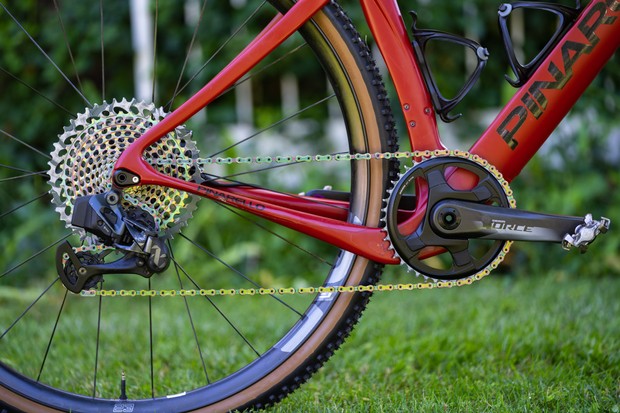
Unleash Your Imagination with SRAM’s Versatile Ecosystem
The SRAM ecosystem empowers you to create your dream drivetrain by seamlessly combining elements from the road, gravel, and mountain bike groupsets. However, it’s worth noting that the new T-Type Transmission drivetrains are not compatible with this mix-and-match feature. Ignite your adventurous spirit with SRAM’s cutting-edge “mullet” setup, where a road chainset graciously dances with an Eagle mountain bike rear derailleur, chain, and cassette. This ingenious amalgamation allows you to enjoy the convenience of Red shifters for drop handlebars, while savoring the unparalleled range that an XX1 Eagle mountain bike drivetrain brings to the table.

SRAM’s Boundary-Pushing Compatibility
While Shimano’s 11-speed offerings do offer some room for interchangeability, SRAM pushes the boundaries further with its remarkable compatibility. The SRAM system opens up a world of possibilities for cycling enthusiasts seeking maximum versatility. Allow your creativity to flourish as you seamlessly integrate different components from SRAM’s extensive lineup.
Campagnolo: The Pinnacle of Wireless Electronic Groupsets
Behold the elegance of Campagnolo’s wireless electronic groupset— a masterpiece in itself. At present, Campagnolo’s Super Record Wireless groupset reigns supreme. Unveiled in May 2023, this top-of-the-line 12-speed marvel captivates riders with its flawless performance. Bid farewell to the iconic thumb shifter as Campagnolo takes a bold leap forward with its design philosophy, embracing future possibilities and leaving a lasting mark in the cycling world.
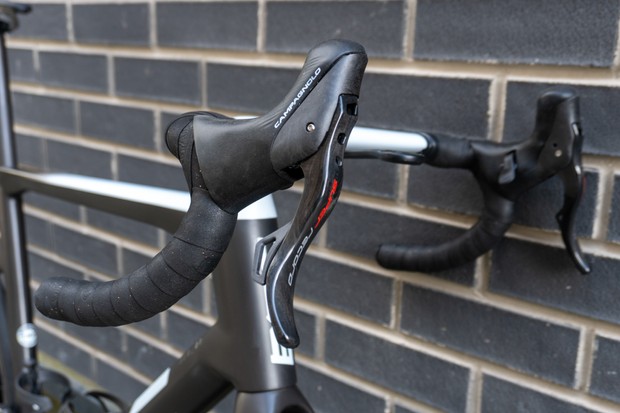
The Future of Wireless Groupsets
While the brand remained silent about specific upcoming developments, it emphasized its consistent practice of introducing new technology at the highest level before gradually making it accessible to a wider market. As a result, we can anticipate the emergence of a lower-tier Wireless groupset in the near future.
The Legacy of Super Record EPS 12
Although Super Record EPS 12 has been discontinued, it continues to be available and is still being utilized in complete bikes. Before the introduction of the latest groupset, Campagnolo’s electronic technology was referred to as EPS, and it was exclusively offered in its 12-speed format on Super Record bikes.
Super Record EPS 12-speed demonstrates Campagnolo’s commitment to maintaining a similarity between electronic and mechanical systems, with the brand even describing it as an “electro-mechanisation” of its mechanical counterpart.
A Trailblazer in Electronic Groupsets
The honor of creating the first electronic groupset goes to Mavic, the renowned French brand renowned for its exceptional range of wheels. In 1992, they introduced the Zap, a wired system that relied on a button on the shifter to initiate shifts. By sending an electronic signal to the rear derailleur, a solenoid engaged the jockeywheel, facilitating the shift through a combination of the rider’s pedaling speed and action.
One common complaint from professional users was that the shifting was not smooth when performed under a heavy load, highlighting a drawback of the system. Mavic made a subsequent update in 1999 with the introduction of Mektronic, a wireless system. However, it faced reliability issues and was significantly heavier, preventing it from gaining widespread popularity. Nevertheless, Mavic’s early advancements laid the foundation for the technological developments that would follow a decade later.
In 2009, Shimano launched its Di2 electronic technology, starting with the Dura-Ace 7950 series groupset. This innovation later made its way to the Ultegra 6750 groupset in 2010. Campagnolo joined the electronic groupset market in late 2011 with the release of the highly anticipated Super Record EPS.
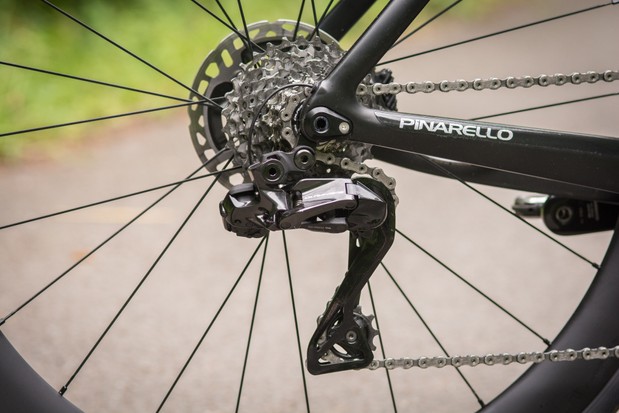
The Revolutionary SRAM Red eTap
SRAM, one of the leading manufacturers in the cycling industry, made waves when they introduced the groundbreaking SRAM Red eTap in 2015. This remarkable electronic groupset marked a significant milestone as it was the first-ever wireless system to hit the market.
Unveiling the Mechanics: How Does It Work?
While different brands may have slight variations, the core principles of an electronic groupset remain consistent. At its heart, this innovative technology operates on a simple premise.
When you engage the shifter, it sends either an electrical signal down a wire or communicates wirelessly with the corresponding derailleur. This action prompts the derailleur to shift precisely into the gear of your choice.
Wireless versus Wired: An Industry Divide
Among the major groupset manufacturers – Shimano, Campagnolo, and SRAM – there is a distinct contrast in how they transmit electronic signals.
Shimano, traditionally known for their wired systems, has most of their electronic groupsets relying on wires even today. However, their latest offerings, such as the remarkable Dura-Ace Di2 R9200 and Ultegra R8100 road groupsets (with hydraulic disc brakes), have incorporated a semi-wireless approach. Additionally, the 105 Di2 also adopts this wireless setup, albeit without a rim brake option.
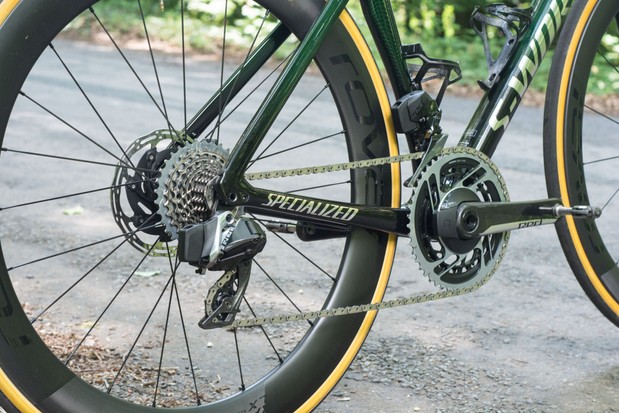
In these systems, a wire connects the derailleurs and the battery, typically nestled within the seatpost. However, the shifters operate wirelessly, powered by their own coin cell batteries.
Meanwhile, SRAM revolutionized the market by being the first among the top manufacturers to offer a fully wireless setup. Their eTap AXS groupsets are available across various cycling disciplines, including road cycling, gravel riding, and mountain biking. With SRAM leading the way, cycling enthusiasts have experienced the liberation from visible electronic wires.
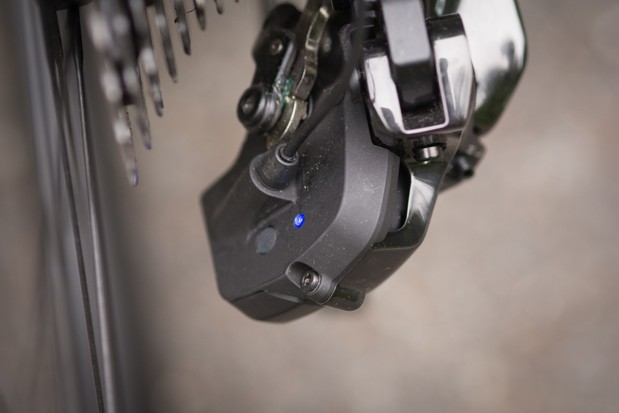
When you activate an SRAM eTap shifter, it sends a signal to the corresponding derailleur through AIREA, which is essentially SRAM’s version of Bluetooth or ANT wireless protocols. This signal prompts the derailleur to shift gears.
Campagnolo now also offers a wireless setup with its Super Record Wireless groupset. In this system, the shifters communicate with the derailleurs using ANT and Bluetooth.
How long does the battery last in an electronic groupset?
The battery life of an electronic groupset can vary due to several factors, not only between different systems but also based on how frequently you shift gears.
For instance, if you’re riding in hilly terrain and need to change between extreme gear ratios more often, you’ll be shifting gears more frequently. Additionally, some riders naturally shift gears more often than others, especially if they’re focused on maintaining a specific cycling cadence.
Shimano’s new 12-speed Dura-Ace and Ultegra groupsets are charged through the rear derailleur. However, the existing 11-speed groupsets require a separate junction box for charging. Shimano claims that its latest Dura-Ace R9200 battery can last up to 1,000km. The levers in these groupsets are equipped with CR1632 coin cell batteries, which have a claimed lifespan of one and a half to two years and are non-rechargeable. If you choose to fully wire the system, the battery life can be extended by up to 50 percent.
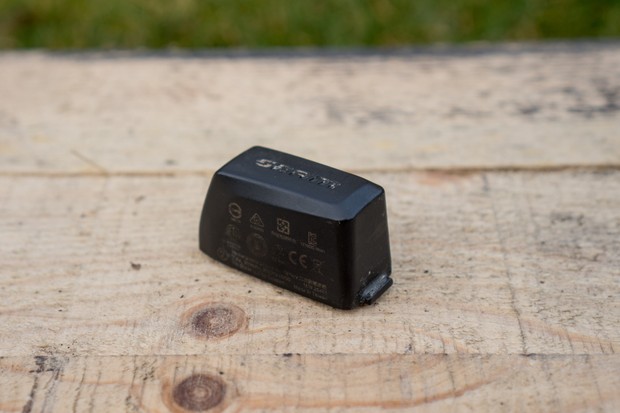
On Shimano’s 105 Di2 groupset, the battery is expected to last approximately three years. However, it’s important to note that these shifters are not compatible with Di2 wires for rim brakes, nor do they support satellite shifters or have an auxiliary button on the hoods.
For Shimano’s 11-speed groupsets, the central battery is rated to last between 1,000 and 2,000km. However, the actual mileage you’ll get out of it depends on how often you shift gears and the type of terrain you’re riding on. You can monitor the battery life on Shimano’s latest Ultegra and Dura-Ace Di2 groupsets through the rear derailleur or on the junction box for existing road, gravel, and mountain bike Di2 setups.
SRAM’s system, on the other hand, relies on rechargeable batteries in the derailleurs and single-use coin cell batteries in the shifters. SRAM states that the derailleur batteries can last approximately 60 hours on a full charge. Charging the batteries in their designated cradle takes around one hour.
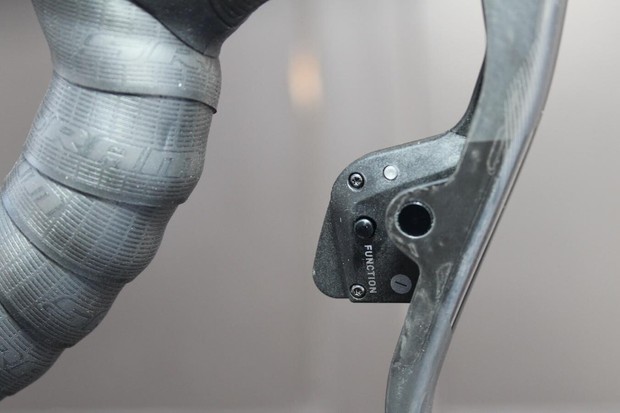
When you activate an SRAM eTap lever, the color of the light on the inside of the shifter paddle indicates the remaining battery life. Green means you have between 25 and 100 percent battery life. When it drops below 25 percent, the light changes to red, and flashing red indicates that the battery is under 10 percent.
If you’re using a 2x system and one of the batteries dies, you can switch the batteries around to the preferred derailleur, if applicable. The shifter battery life can also be viewed on the inside of the shifter paddle, with green indicating 6-24 months remaining, red indicating 1-6 months, and flashing red indicating less than a month.
Campagnolo Super Record Wireless utilizes a CR2032 coin battery in the shifter, which is claimed to last for two years. The derailleurs, on the other hand, have separate batteries and cannot be swapped between them, unlike SRAM. However, you can charge them both on or off the bike.
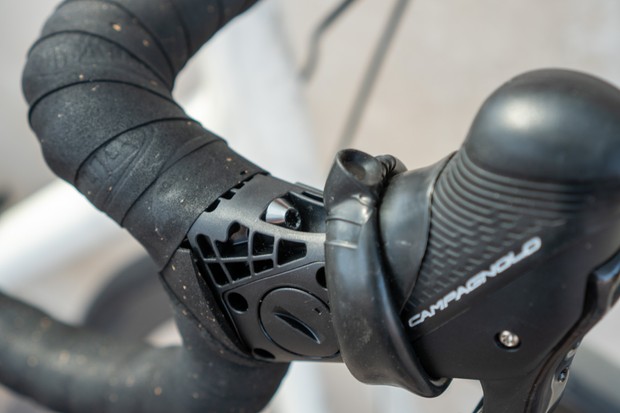
The derailleurs in the Campagnolo system have ‘Mac-type’ charging ports, and Campagnolo states that the batteries can be charged to 90 percent in 45 minutes or fully charged in 60 minutes. If you find yourself running out of battery during a ride and have the charge cable with you, Campagnolo claims that you can charge the system up to 20 percent in just ten minutes.
Campagnolo’s previous EPS groupsets use a fully wired system with one battery. The brand claims that its latest V4 battery can last up to 1,700km, depending on riding conditions and shifting frequency.
Similar to Shimano’s 11-speed groupsets, Campagnolo’s EPS junction box indicates the remaining battery life. The V4 interface unit, which is typically located under the stem, integrated into the down tube, or in place of a bar-end plug, displays various colors of LED lights to represent battery life.

A steady green light indicates a charge between 60 and 100 percent. A flashing green light indicates a charge of less than 60 percent. A flashing amber light indicates a charge between 40 and 60 percent. A continuous red light indicates a charge between 6 and 20 percent. Finally, a flashing red light signifies a charge of less than 6 percent.
Is it possible to upgrade from a mechanical groupset to an electronic one?
When the cables are externally routed, it is not feasible to fit a wired electronic groupset. Mechanical drivetrain components are not compatible with electronic parts. However, if you’re willing to overhaul the entire groupset, you can generally upgrade from a mechanical groupset to an electronic one.
However, there are some factors to consider if you’re planning to make this change to your bike’s drivetrain.
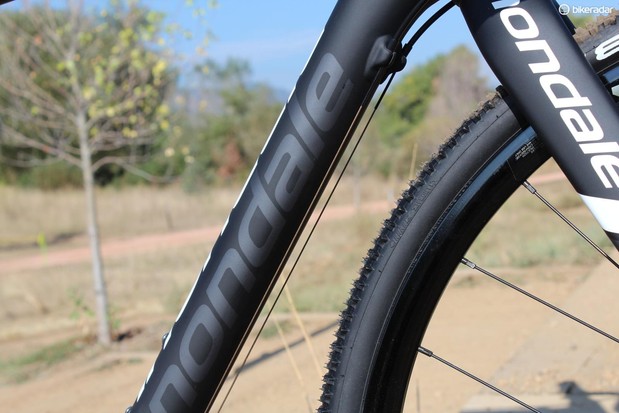
Switching from a mechanical to an electronic groupset depends on the cable arrangement, especially if you’re using a wired system. If your frame has external cable routing, it may not have a designated spot to mount the battery. Some older frames may have a mounting point on the bottom of the down tube or bottom bracket area specifically for the original style of Shimano or Campagnolo battery.
So, is it possible to modify your frame to accommodate internal cable routing for electronic groupsets?
In general, the answer is no. Frames are designed by manufacturers with specific cable routing styles in mind. The area between the chainstay and bottom bracket area is often sealed off, making it difficult to run cables or wires.
If you’re planning to upgrade to a fully wireless system, the cable routing of your frame becomes irrelevant. This system offers greater compatibility with older frames.
You may want to use plugs to cover any redundant cable guides, both for aesthetic purposes and to prevent moisture from entering the frame.








